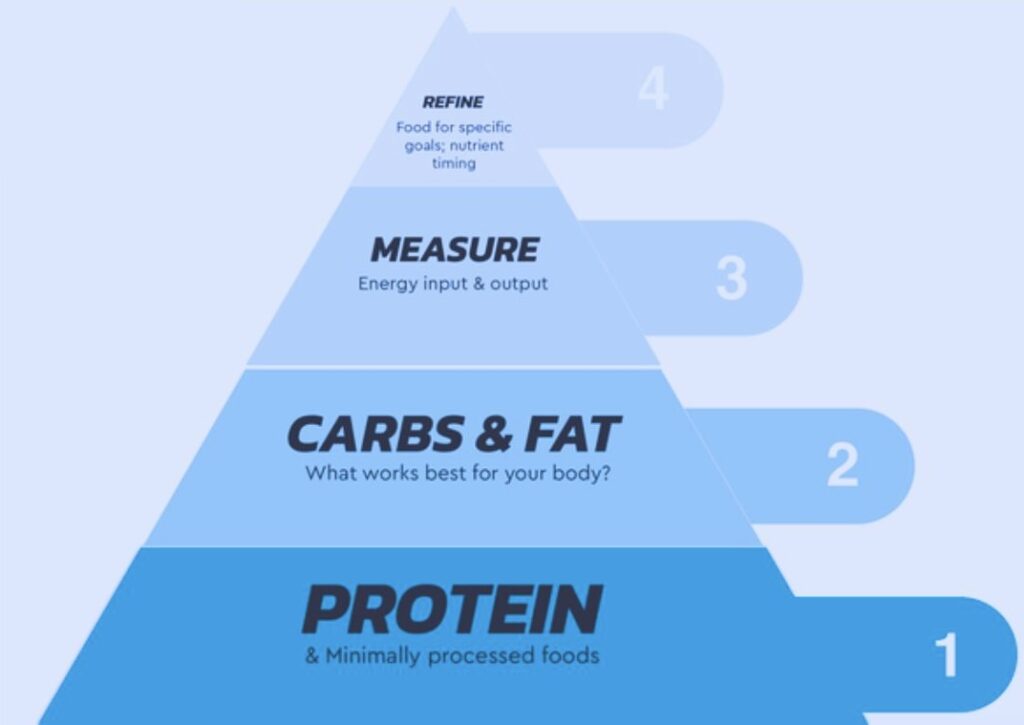What World Champions Have in Common
There are two truths about people who have reached expert level.
- World Champions always use the fundamentals.
- Fundamentals don’t unlock World Champion results.
Every player, competitor, or team that wins a world championship sticks to the fundamentals of their discipline.
In addition to those fundamentals, they must layer on extraordinary levels of work. They must devote time, and employ some advanced tactics to edge out their competition. They go above and beyond – because being a World Champion demands that.
The fundamentals don’t create the world champion. But you cannot be a world champ without them.

Avoid the Temptation to Complicate
The second theme: getting fancy and making things more complicated is a temptation we all can fall victim to. Some more easily than others. Nutrition and training are two areas that people love to make complicated.
Just spend 30 minutes on social media looking at nutrition content. You’ll find 100 different approaches to dieting. There are endless bio hacks. Hundreds of “specialty” foods and ingredients “need” to be included in your diet.
If you try to follow all the rules, you might easily get overwhelmed. And say F*$K IT to the whole process of healthy eating.
Going down very nuanced rabbit holes with nutrition and training can stop progress altogether. You end up getting too caught up in the advanced concepts that you give up on even the fundamentals.
What Are the Fundamentals?
Think about nutrition success like a pyramid. If you focused on the bottom 80%, where the fundamentals live, you’ll see 95% of the results you want.
Here’s what’s astonishing. The results you get from the bottom 80% of the pyramid make you seem like one of the most uncommon individuals on the planet. You will be 1 in a 100. The ease by which you maintain your body weight. The energy you have in life. These and your body composition will stand out in just about any crowd.

Stick to basics and don’t overcomplicate things, and you will become so unique that people will start to look at you differently. They might even label you a fanatic. Because the results they see in you will convince them you must be going the extra mile in everything.
Is it ever OK to get complicated and go for more advanced tactics?
I’m not saying you should never take on more complicated or nuanced nutrition tactics. Sometimes this can help you unlock new potential. When your fundamentals are super sound and steady, it can be rewarding to push yourself a little further. However, be careful that the trip into complexity doesn’t make you lose sight of the basics.
Let’s have a practical look at how we can label the fundamentals of nutrition.
1) Protein + Carbs = Muscle & Energy
Why do you hear so much about protein? Because it builds muscle, keeps you full longer, and diminishes cravings – foundations with compounding results.
Protein Basics:
- Eat 0.7-1g per pound of bodyweight. Lower end if you’re not super active, higher end if you are injured, over 50, or train often and want to build muscle.
- Spread it out evenly over 3-4 meals per day
Include carbs around your training for energy to push.
Resistance training is muscle remodels, grows, or simply maintains. The amount of effort you give in these sessions is key to getting the result you want. Carbs are the resource we use during this type of training that stimulates muscle growth.
You can make your own carbs for this. But you are much better off eating some about 30-60 mins before you train to ensure you get a great energy boost. A piece of fruit should suffice.
2) Eat Just Enough – Without Overthinking
Stay in an energy balance – that means avoiding over or under eating in ways that make your goal harder.
Here’s how to do it without having to COUNT/TRACK calories perfectly.
Choose whole foods over processed. Make your own meals from whole ingredients when possible. You significantly decrease the chance of adding unnecessary calories. No prep time? A few slices of deli meat and fruit still win over the microwaveable burrito.
Eat higher fiber foods. Fiber doesn’t add calories, but pulls water into the digestive system, helping you feel full. High fiber foods tend to have fewer calories. Think pears, strawberries, avocado, apples, raspberries, carrots, artichokes, lentils, popcorn, and chia seeds.
Staying hydrated also helps you feel full, and boosts physical and mental performance. When you’re bored and reach for snacks, drink a glass of water first. Drink with meals and throughout the day too.
3) Fruits & Veggies In Every Meal
Instead of focusing on restriction, make it a habit to include more good stuff, more often. In addition to protein at every meal, eat fruits and veggies too.
They tend to be high volume – in other words, look like a lot on your plate. But they are high in fiber and don’t add too many calories. They also deliver micronutrients to help your body function better. This means better psychological and emotional control around food.
- 1 medium Granny Smith apple – 63 calories + 3.5 grams of fiber
- 3 baby cucumbers – 22 calories + 2 grams of fiber
- 1 cup cherry tomatoes – 62 calories + 4 grams of fiber
Daily Nutrition Basics
- Eat .7-1grams of protein per pound of your bodyweight. Include Protein at EVERY MEAL.
- Include 1-3 veggies or fruits at every meal
- Hydrate at every meal and between every meal with 8-12oz of water.
- Keep plenty of whole food ingredients stocked in your home. Try to choose foods with high fiber content.


